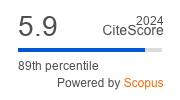Article | Open Access
We Live Here, and We Are Queer!: Young Gay Connected Migrants’ Transnational Ties and Integration in the Netherlands
| Views: | 6953 | | | Downloads: | 4742 |
Abstract: Upon arrival to Europe, young migrants are found grappling with new language demands, cultural expectations, values, and beliefs that may differ from global youth culture and their country of origin. This process of coming-of-age while on-the-move is increasingly digitally mediated. Young migrants are “connected migrants”, using smart phones and social media to maintain bonding ties with their home country while establishing new bridging relationships with peers in their country of arrival (Diminescu, 2008). Drawing on the feminist perspective of intersectionality which alerts us socio-cultural categories like age, race, nationality, migration status, gender and sexuality impact upon identification and subordination, we contend it is problematic to homogenize these experiences to all gay young adult migrants. The realities of settlement and integration starkly differ between desired migrants – such as elite expatriates and heterosexuals – and those living on the margins of Europe – forced migrants and lesbian, gay, trans, queer and intersex (LGBTQI) migrants. Drawing on 11 in-depth interviews conducted in Amsterdam, the Netherlands with gay young adult forced and voluntary migrants, this paper aims to understand how sexual identification in tandem with bonding and bridging social capital diverge and converge between the two groups all while considering the interplay between their online and offline entanglements of their worlds.
Keywords: bonding social capital; bridging social capital; connected migrants; digital diaspora; digital migration studies; forced migrants; gay; inter-ethnic social contact; sexuality; voluntary migrants
Published:
© Jeffrey Patterson, Koen Leurs. This is an open access article distributed under the terms of the Creative Commons Attribution 4.0 license (http://creativecommons.org/licenses/by/4.0), which permits any use, distribution, and reproduction of the work without further permission provided the original author(s) and source are credited.


